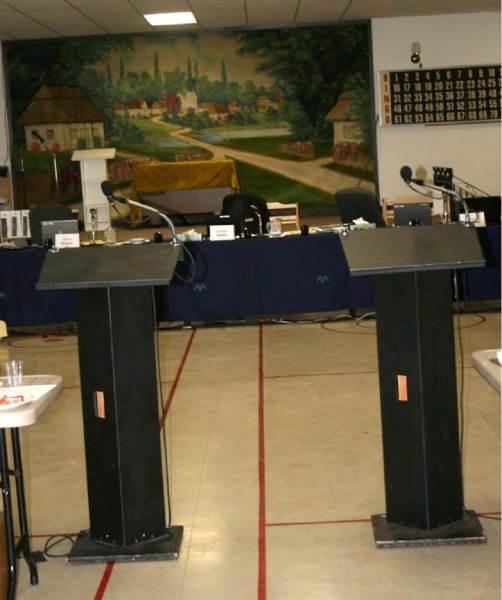The Energy Resources Conservation Board (ERCB) began hearing CNRL's case for drilling near Minnie Lake (MLCS) on Tuesday afternoon at the Glendon and District Senior's Centre.
MLCS was granted intervener status in 2010. The hearing date had been rescheduled twice to accommodate requests for time to gather “expert" opinion. Representing MLCS is area resident Coralee Beaulieu.
ERCB board members Jeffrey Gilmour, Rob McManus, and George Eynon are presiding over the hearing.
In CNRL's opening statement, manager of exploitation, Robin Zabec, told the hearing that the proposed drilling of 15 wells from eight pad sites would at current rates provide the province with $11.8 million in royalties over the lifetime of the project.
If the project is not approved, the company would be prevented from exercising rights granted in the province and paid for by CNRL, he said, adding that the provincial, federal, and local economy would lose out on economic benefits of development, he said.
Drilling co-ordinator Ed Fouillard, hydrologist James Freeman, and toxicologist Dr. Donald Davies, gave PowerPoint presentations on behalf of CNRL.
Freeman, with environmental and engineering consultants Matrix Solutions, told the panel the drilling would not contaminate or have an impact on the lake due to the depth of the oil reserve and the low permeability of 200 metres of shale between aquifers and the reserve.
The company uses a non-toxic thickener while drilling called Xantham gum, the same agent used in salad dressing and ketchup, said Fouillard. Fouillard's presentation also focused on the process of cementing surface casing in place.
Dr. Davies evaluated three reports on health assessment, one by Alberta Health Services, one prepared by Bob Coppock, and another from Alberta Environment.
Emissions from holding tank batteries would not cause any adverse health effects because the level of toxicity would be well below the allowable limit, he told the panel.
After presentations, ERCB lawyer Kurt Stillwell cross-examined the panel. MLCS was scheduled to cross-examine the panel on Wednesday morning and present its case in the afternoon. The hearing is expected to wrap up Thursday or Friday.
The CNRL panel also included testimony from Dave Blake, superintendent of the Bonnyville area, Wayne Nielsen surface landman, Blaine Parker with CNRL, and Roxanne Bretzlaff, field environment co-ordinator,
For full coverage, see the St. Paul Journal on March 15.



